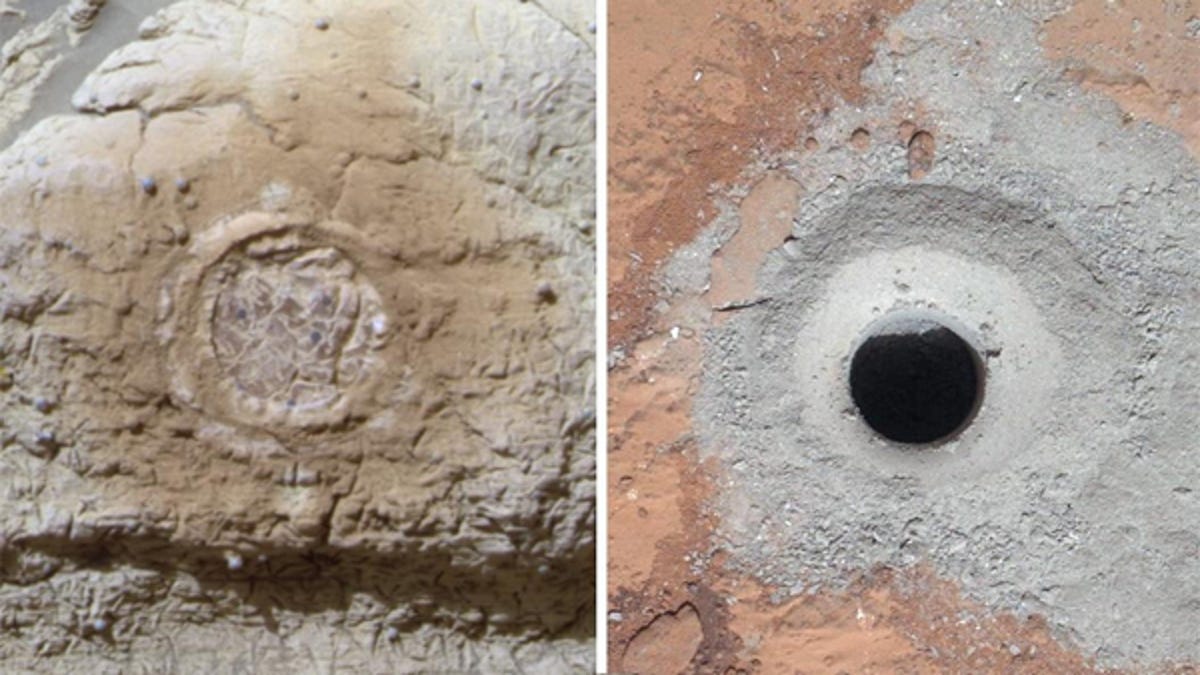Curiosity finds Mars could have supported life
Soil samples analysed by the Curiosity Mars rover have revealed evidence that the red planet could have once supported microbial life.

Curiosity's drill site on the John Klein rock.
(Credit: NASA/JPL-Caltech/Cornell/MSSS)
Soil samples analysed by the Curiosity Mars rover have revealed evidence that the red planet could have once supported microbial life.
After Curiosity drilled into the sedimentary rock on the surface of Mars, scientists analysed the dust to discover some of the key chemical ingredients for life: sulfur, nitrogen, hydrogen, oxygen, phosphorus and carbon.
Last month, Curiosity dug into the John Klein rock in the Gale Crater, in a network of dried-up streambeds, to collect the first non-surface soil sample from another planet. This is part of Curiosity's ongoing mission to study Mars — part of which is to look for evidence of life.
Lead scientist for NASA's Mars Exploration Program Michael Mayer said, "A fundamental question for this mission is whether Mars could have supported a habitable environment. From what we know now, the answer is yes."
Because the site of the drill used to be a water channel, clay minerals make up at least 20 per cent of the sample, NASA said. These minerals are the product of fresh water with igneous materials.
Paul Mahaffy, who is in charge of Curiosity's Sample Analysis at Mars instruments, said, "The range of chemical ingredients we have identified in the sample is impressive, and it suggests pairings such as sulphates and sulphides that indicate a possible chemical energy source for micro-organisms."
Via www.nasa.gov

